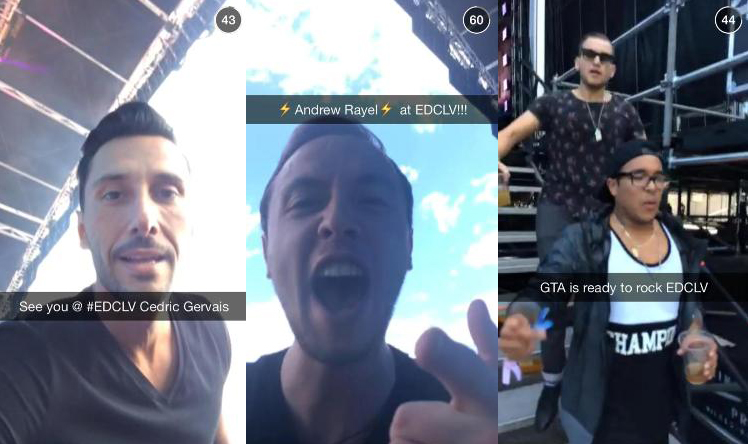Evan Spiegel, CEO of Snapchat, turned down an offer from Facebook to buy the company for $3 billion last November. Casual. The CEO claimed he was confident that Snapchat could do better and was not ready to be acquired. At the time, critics thought he was crazy to turn down such a generous valuation but in retrospect, it seems he was right.
Snapchat started as a simple way to send photos back-and-forth. However, it is veering away from the idea of simple photo messaging and transitioning into a full-blown social media platform — a platform that will be much easier to monetize. Perhaps they took a page out of Facebook’s book: build users first and then find a way to make money.
With the introduction of the “My Story” feature that encouraged people to add photos for everyone to see without sending them individually, Snapchat became more of a social media site than a messaging site.
Then came the addition of “Our Story” , which was launched right before the Electric Daisy Carnival (EDC). Users were given the option of adding to the collective story.

Artists appearing at EDC were announced via Snapchat. Image via dancemusicnw.com
Attendees could Snapchat the EDC feed for a chance to be featured by the EDCLive account. Jealous onlookers (myself included) lived vicariously through the people who were there.
This was a win for EDC for two reasons. The first being that user submitted content was more intimate, authentic, and varied than any footage an outside team could have captured. As a bonus, all the content was free. The Our Story tool is the supreme FOMO inducer.
Approximately a month later, this time operating as an opt-out instead of an opt-in “feature,” a “RioLive” feed appeared. Celeb spottings, crowd shots and even selfies were shared with Snapchat users around the world.
Soon after, Snapchat introduced geo-location stickers for different locations. Some regions like Brooklyn and the Jersey Shore have fun stickers that you can use.
They also have specific stickers for lifestyle companies like Soul Cycle.
It’s not so much of a stretch anymore to suggest that Snapchat is moving towards monetization with these two new features. Companies can pay to have their events featured in Our Story and ads can even be localized now that Snapchat has your location data.
On top of this, companies will be able to pay for stickers that are advertisements emblazoned on your face. Slapping a nice Disneyland sign or SoulCycle logo on your photos as you send is basically free product placement.
At this point, it’s only a matter of time before Snapchat starts bringing in some real money and the investors seem hopeful as well. A report from Bloomberg yesterday shows that Snapchat is talking to investors at a $10 billion valuation.
Looks like Facebook missed their chance.
Do you like the direction Snapchat is going? Will advertising on the platform change your mind? Share your thoughts in the comments!

